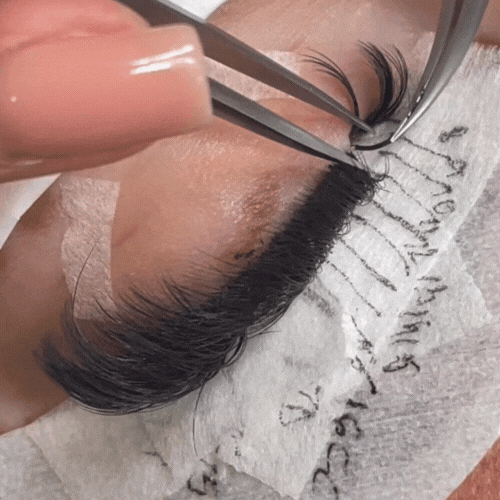FREE STANDARD SHIPPING FOR ORDERS OVER $170!
FREE STANDARD SHIPPING FOR ORDERS OVER $170!
Glues & Liquids
Eyelash Extensions
ACCESSORIES
Three Key Strategies To Preserve Natural Lashes With Eyelash Extensions
April 01, 2024 3 min read

Can Eyelash Extensions Harm Your Natural Lashes? Three Tips to Prevent Damage
Starting out as a lash technician can feel like navigating a maze with all the techniques and best practices to remember. It’s just as crucial for seasoned professionals to revisit these fundamentals, given how rapidly our industry evolves. Sometimes, in the pursuit of fulfilling client desires for fuller lashes, we might inadvertently compromise on quality or safety.
The question "Can eyelash extensions harm your natural lashes?" garners significant attention online. The straightforward response is "not if applied correctly." So, what measures can we take to ensure the natural lashes remain unharmed?
Below, we've outlined some essential advice to help you protect your clients’ lashes, ensuring they remain healthy and robust.
1. Choosing the Correct Lashes - Thickness
Selecting the appropriate lashes for your client's desired look is critical and can allow for the application of 30D+ fans without causing any damage. You might wonder if this would be too heavy for the natural lashes. Indeed, choosing lashes that are too thick could cause damage over time.
Your selection should be based on the client’s natural lash strength and thickness. For clients with robust lashes, thicker extensions are feasible. However, opting for thinner extensions is a safer approach to safeguard the natural lashes.
- Typically, 0.25 lashes are considered too heavy for most clients, though they are available as flat lashes, which are about half the weight of a standard classic lash.
- The same caution applies to 0.20 lashes due to their weight.
- For a classic set, we recommend not going beyond 0.18 as it still provides a full, dark mascara effect without compromising lash health.
- The 0.15s are universally safe, offering a lovely mascara look, yet may still be slightly heavy for clients with extremely fine lashes.
- Lashes with 0.12 thickness give a lighter finish, perfect for added density without the extra weight.
- For a light volume set, 0.10 lashes are ideal, capable of creating 2D fans.
- Lashes 0.07 through 0.03 range from volume to mega volume capabilities, accommodating fans up to 35D.
- The calculations for fan sizes are based on how many lashes of a certain thickness equate to a single 0.18 classic lash, using volumetric formulas.
- This might seem complex, but it essentially involves comparing diameters to find an almost equivalent weight.
2. Choosing the Correct Lashes - Length
A general guideline is that extensions should not exceed 3mm longer than the natural lashes. Going longer can lead to premature lash loss or damage at the root, potentially resulting in thinner regrowth or, in some cases, none at all.
If a client insists on longer lashes, consider using thinner lashes to mitigate some risks.
3. Avoiding Stickies
Preventing stickies is crucial; they not only cause damage but are also uncomfortable for the client. Heavy lashes might silently cause harm, but stickies will unmistakably signal damage to your client.

Ensuring perfect lash isolation, using the right amount of glue, and working symmetrically across both eyes to allow drying time are key practices. Despite precautions, a few stickies might occur, so allocate 10-15 minutes at the end of each session for separation.
Maintaining the integrity of your clients' natural lashes not only upholds your reputation but also fosters business growth through positive referrals. By prioritizing lash health, the eyelash extension industry will continue to be recognized for its safety and reliability.
Check out these featured products
Subscribe
Sign up to get the latest on sales, new releases and more …



































